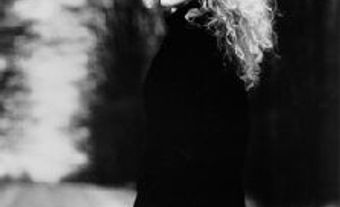Daoust, Yves
Daoust, Yves. Composer, teacher, b Longueuil, near Montreal 10 Apr 1946. Daoust began studies in piano at age seven, wrote a film soundtrack for "prepared" piano at 16, and at 19 completed his first electronic work, for a Berlin theatre. He then studied piano with Irving Heller and analysis and composition with Gilles Tremblay at the Conservatoire de musique du Québec à Montréal (1966-71), worked on music for films with Maurice Blackburn and Norman McLaren at the National Film Board (NFB) (1970-1) and completed further studies in electroacoustic composition in France, where he studied with Alain Savouret, Gilbert Amy and the Groupe de musique expérimentale de Bourges. Upon returning to Canada, Daoust worked in the sound studio of the NFB (1976-9) and in 1978 joined the staff of the Conservatoire de musique du Québec, both in Montreal and in Quebec City, to teach solfège, analysis, and (beginning in 1981) electroacoustic composition.
The Société de musique contemporaine du Québec (SMCQ) commissioned Daoust for Valse (1980) and Variations sur un air d'accordéon (1987); the CBC for En hommage à Maurice Blackburn (1982, rev. 1995) and Fantaisie (1986); the Groupe de musique expérimentale de Bourges for La Gamme (1980), Il était un fois (1987) and Ouverture (1989); and Joseph Petric for L'Entrevue (1991). Daoust collaborated with Mimes Omnibus for Carnaval. His more recent works include Water Music (1991), created from sounds of melting icicles mixed with speech and children's voices; Montréal sacré (1992), a portrait of Sunday morning achieved by overlapping a recording in St Joseph's Oratory with soundscapes from different areas of Montreal recorded on several Sunday mornings; and Impromptu (1994), in which Daoust skirts postmodernism with a series of manipulations based on a MIDI recording of Chopin's Fantasie impromptu in C sharp minor (Op 66). Daoust has also collaborated with Denis Gougeon on two stage works for L'Arsenal de musique: Planète Baobab (1999) and Alice (2004). He has worked with many leading soloists, including pianists Anne Barteletti and Manuel Schweizer, flautist Lise Daoust, keyboardist Anne Gaudemer, horn player Louis-Philippe Marsolais, and harpsichordist Catherine Perrin. His Quatuor won the first prize (analog category) and the grand prize at the Concours international des musiques électroacoustiques de Bourges in 1980, and the Euphonie d'Or in the same contest in 1992.
One of the pioneers of electroacoustic music in Quebec, Daoust is one of the most active composers in the field in Canada and is perhaps the senior exponent of the anecdotal (concrete/collage) approach to composition. He has been strongly influenced by cinema in his creative output, and uses material from film, stage, multimedia events, radio and concert works in his music. He describes himself as "figurative," preferring natural sounds, sound archives and musical quotations to aid his visual approach to composition. He draws extensively on sound materials from everyday life (such as children's voices, street scenes) in his electroacoustic music but is also concerned with the integration of acoustic instruments with tape. His music reflects a sense of humour and a certain nostalgia (Adagio, Fantaisie), but is also, at times, overtly political in its expression of Quebec nationalism (Ouverture).
Daoust founded and runs the electroacoustic composition program at the Conservatoire de musique du Québec à Montréal. He is also an administrator for the Composers, Authors and Publishers Association of Canada, the Association pour la création et la recherche électroacoustiques du Québec (ACREQ, which he helped create in 1978 and for which he was artistic director 1983-7 and 1989-91), and the Canadian Music Council, and a broadcaster and concert organizer. He is a member of the Canadian League of Composers, a founding member of the Canadian Electroacoustic Community, and an associate of the Canadian Music Centre.
Selected Compositions
Selected Works
Stage
Carnaval. 1984. Mime group and tape, rev. for solo tape in 1988
Variations sur un air d'accordéon. 1988. Tape, mime and accordion
Planète Baobab. 1999. Orchestra and live electronics, in collaboration with Denis Gougeon
Alice. 2004. Orchestra and live electronics, in collaboration with Denis Gougeon
Electroacoustic
Tout le monde est d'bonne humeur. 1978. Tape
Quatuor. 1979. Tape. La Gamme, 1981, tape. ACREQ IV (cassette)
Il était un fois. 1987. Tape
Ouverture. 1989. Tape
Suite baroque. 1989. Tape
Résonances. 1992. Tape
Impromptu. 1994. Tape
Bruits. 1997-2001. Tape. In three movements that can be played separately: Children's Corner (1997-8), Nuit (1999) and Fête (2001)
Electroacoustic with instruments
Valse. 1980. Instrumental ensemble, tape. Ms
Petite musique sentimentale. 1984. Piano and tape. Ms.
Le Monde merveilleux de la musique. 1985. Clarinet, saxophone, percussion, tape. Ms
Adagio. 1986. Flute, tape. Ms.
L'Entrevue. 1991. Accordion, tape. Ms.
Impromptu, longer version for piano, synthesizer, sampler, and tape, 1995
Radio
En hommage à Maurice Blackburn. Radiophonic work. 1982 rev. 1995
Fantaisie. Radiophonic work. 1986
Water Music. 1991. Tape
Sound Montage
Montréal sacré. 1992
Discography
Quatuor. 1985. UNESCO/CIME: LDC 278 043
Adagio. 1990. Radio-Canada International: ACM 37
Mi bémol. 1990. empreintes DIGITALes: IMED 9004
Mi bémol. 1991. Ear Magazine: 1
Suite baroque; Petite musique sentimentale; Adagio; L'Entrevue; Quatuor. Lise Daoust, flute; Jacques Drouin, piano; Joseph Petric, accordion. 1991. empreintes DIGITALes: IMED 9106
Maurice Blackburn: portrait d'un méconnu. 1996. Analekta: AN 7005/06
Impromptu; Il était une fois; Mi bémol; Résonances; Water Music; Fantaisie. 1998. empreintes DIGITALes: IMED 9843
Il était une fois. 2000. Chrysopée électronique/Opus 30
Bruits; Impromptu; La Gamme; Ouverture. Jacques Drouin, piano; Lorraine Vaillancourt, synthesizer, sampler. 2001. empreintes DIGITALes: IMED 0156

 Share on Facebook
Share on Facebook Share on X
Share on X Share by Email
Share by Email Share on Google Classroom
Share on Google Classroom

